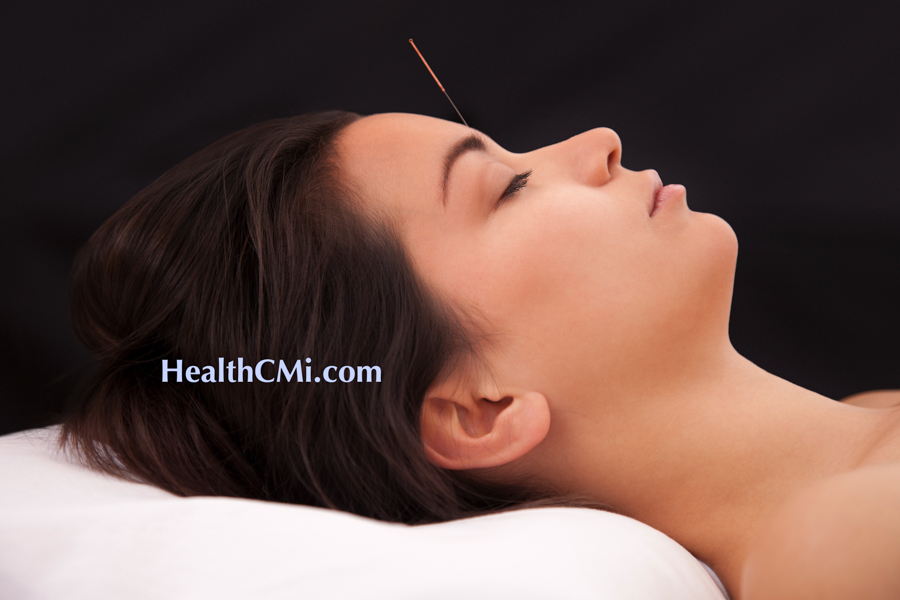
Acupuncture is effective in downregulating inflammation in patients with allergies affecting the sinuses while simultaneously alleviating symptoms. Allergic rhinitis (AR) is a common ENT (ear, nose, and throat) disorder typically characterized by a non-infectious inflammatory reaction in the nasal mucosa caused by allergens, mediated by IgE, involving multiple inflammatory factors and immune system cells. Investigators compared the efficacy of Xuanfei Tongqiao acupuncture combined with warm needle moxibustion at DU14 on patients with AR versus patients receiving the drug loratadine (an antihistamine). Acupuncture outperformed drug therapy.
AR is categorized under the nasal congestion category in Traditional Chinese Medicine, where congestion implies blocked nasal passages or a runny nose. As described in Chapter 8 (Ben Shen 本 神) of the Ling Shu, the text states: “When the lung qi is deficient, the nose becomes congested and dysfunctional.” This study focuses on the efficacy of acupuncture to benefit the nasal passages.
Sixty patients with AR who attended the acupuncture outpatient clinic at the Traditional Chinese Medicine Hospital of Yulin City from January 2021 to February 2022 were selected. The patients were randomly divided into acupuncture treatment and drug control groups, with 30 patients each. In the control group, participants orally took loratadine tablets (10mg/tablet), one tablet per dose, once daily, for 28 days.
Acupuncture Technique
The Xuanfei Tongqiao acupuncture technique was combined in the acupuncture treatment group with warm needle moxibustion at GV14 (Dazhui). The primary acupuncture points were EX-HN3 (Yintang), LI20 (Yingxiang), and EX-HN8 (Shangyingxiang, Bitong), with auxiliary points at GB20 (Fengchi), LI4 (Hegu), LU7 (Lieque), BL13 (Feishu), and CV6 (Qihai).
The needle at EX-HN3 (Yintang) was inserted using a pinching technique towards the root of the nose at an oblique insertion depth of 3mm, with a gentle twirling technique utilized for mild reinforcing-reducing, aiming for a sensation of fullness in the nose. LI20 and EX-HN8 (Bitong) were needled towards the alar crease of the nose at a 30-degree angle for 15–20mm, with rapid twirling for mild reinforcing-reducing, aiming for a sensation of fullness in the tip and cavity of the nose. GB20 was angled toward the tip of the nose and inserted 25mm, using a twirling method for reinforcing-reducing. LI4, LU7, BL13, and CV6 were needled using the routine technique of lifting and thrusting for reinforcing and reducing. Needles were retained for 30 minutes, with manipulation every 5 minutes, three sessions per week, with two weeks making up one treatment course, totaling two courses of treatment.
Warming needle moxibustion at GV14 (Dazhui) was performed with patients seated or prone, using a 0.35mm x 50mm acupuncture needle at GV14. The moxa stick, 1cm in length, was attached to the needle handle lit at the bottom end while covering the skin with a cardboard shield to prevent burning until the moxa extinguished itself, with three sessions per week, two weeks per one treatment course, and two courses completed.
Results
After treatment, patient in the acupuncture treatment group showed significantly greater improvements in CD4+ levels, the CD4+/CD8+ ratio, and CD8+ levels, demonstrating better outcomes for patients receiving acupuncture. In addition, nasal symptoms improved in the acupuncture group and were significantly better than in the drug group. [1]
Reference:
[1] Shang Huimei, Zheng Tong, Huang Ling, et al. Diagnostic analysis of Xuanfei Tongqiao acupuncture combined with Dazhui point warming acupuncture in treating allergic rhinitis [J]. Journal of Clinical Acupuncture, 2023, 39(06): 22-26.


